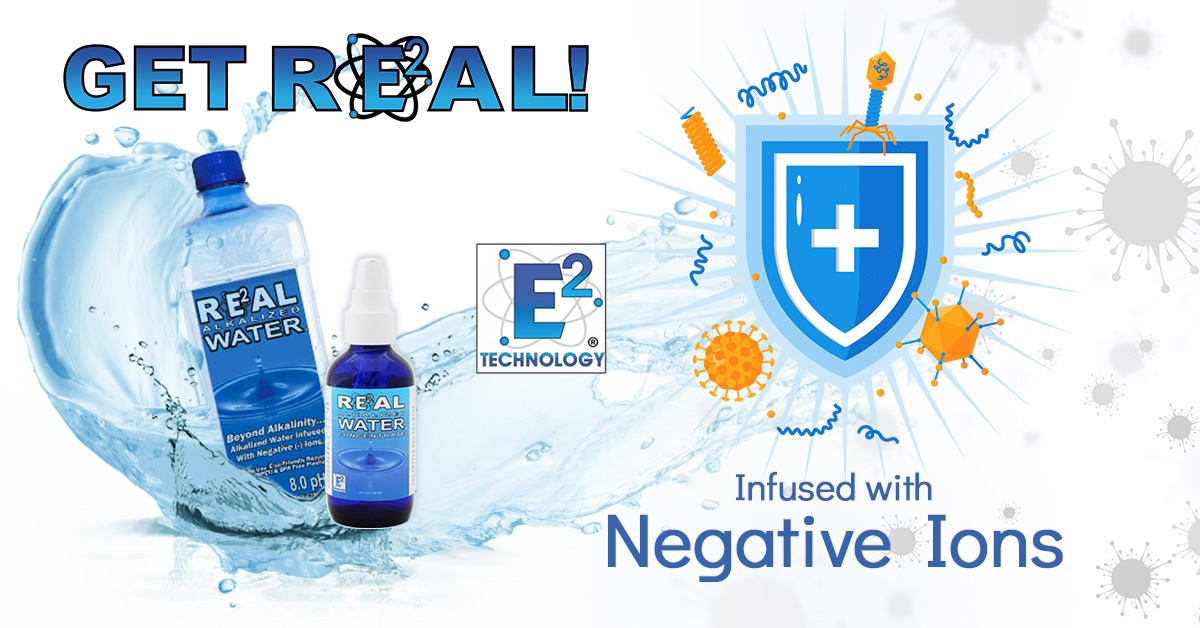When it comes to disinfecting during a pandemic, there is more than just hand sanitizer and soap that can be used.
Since the coronavirus outbreak in January 2020, there has been a multitude of products that claim they can kill the germs that have proliferated. These products are in addition to taking most precautions, such as wearing face masks, carrying bottles of hand sanitizer, and cleaning environments with bleach.
However, many of these products do not live up to their marketing claims, and some may do more harm than good.
Hypochlorous Acid
There is a gentler alternative to bleach; hypochlorous acid (HOCL) has been touted as a natural and harmless disinfectant. It is sold as sprays under names like Nano Guard and Water God. They are found in pharmacies, grocery stores, and vending machines in Hong Kong and Taiwan. In the United States, hypochlorous acid can be found in hardware stores and online.
Essentially it is made from the same substances as bleach – sodium hypochlorite, however, a pH of 6 is safer to handle than bleach which is a strong alkaline. It is also proven to be more effective against bacteria.
Portable Air Purifiers
Portable air purifiers disinfect the air as the user moves around. They are currently sold in pharmacies in Hong Kong and Japan where they are made. One packet costs around HK$50 which is $6.45 in the United States. It is worn around the neck and can be used for 30 days.
The packet contains sodium chlorite and an acid that comes in the form of a solid pellet. When it is exposed to moisture in the air it slowly reacts to put out chlorine dioxide gas. This is a strong oxidizing agent that kills pathogenic micro-organisms.
This protection is very limited because the gas dissipates quickly, especially outside where the air is moving. The rate of formation cannot keep up with the rate of dilution. If a person sneezes, it cannot kill all the virus particles before reaching another person.
Ozone Generator
Ozone generators are banned in California. This is because it is a product where the “risks heavily outweigh the benefits.” These generators are available in sizes as small as a cell phone or as large as a microwave and prices are as wide-ranging.
It removes smells by reacting with volatile organic compounds and ozone is an air pollutant. It is poisonous and can damage cells. When it is allowed to accumulate in the air it can reach dangerous levels.
Negative Ion Purifier
Negative ion purifiers have been around for some time. Portable ones can be taken on-the-go and have become popular since the coronavirus outbreak. They can be worn around the neck or clipped onto clothing and some boast a 15-hour battery life. Taiwan sells a brand that can be worn like a necklace and features Disney characters.
Negative ion purifiers electrify molecules in the air. The negatively charged molecules bind themselves to other gas particles in the air such as viruses, dust, and bacteria on surrounding surfaces like walls and furniture. The negative ion purifier increases the rate of precipitation and reduces the number of these particles in the air. This lowers the risk of contamination in enclosed spaces.
However, the effectiveness drops dramatically outside where the air is dynamic. Additionally, negative ion air purifiers release ozone into the atmosphere.
Negative ions are generated naturally by radiant or cosmic rays in the atmosphere, sunlight including ultraviolet light, discharge from lightning, shearing forces of water, and plant-based sources of energy.
Radioactive elements like uranium, radium, actinium, and thorium are widely available on Earth. They decay in the atmosphere and emit rays that ionize the air. Therefore, radiant and cosmic ray ionization are prevalent in the atmosphere. Cosmic ray ionization accounts for 20 percent of the total ionization over land surfaces. Additionally, they are the principal energy sources that generate negative ions over oceans. The concentration of negative ions from these rays can reach over 1,000 ions per centimeter at 15 km from the land surface.
Negative ions are generated when a certain wavelength is emitted from the sun onto a metallic surface. The photoelectric effect may contribute less to the negative ion generation as they come from lightning. However, ultraviolet-mediated ionization is the dominant source of negative ions in the atmosphere above a 60 km altitude.
Generating Negative Ions
These negative ions are highly concentrated from ultraviolet rays in the upper layers of the atmosphere. They are diffused to the ground surface at low speeds. Ionization by ultraviolet radiation is not a major contributor of negative ions in the lower atmosphere because there is a low dose of ultraviolet rays available at the lower level. However, artificial ultraviolet light will produce negative ions in low concentrations.
The atmosphere around Earth is subjected to a natural electric field. Its intensity fluctuates under local and global influences. Local influences include geographical location and weather conditions such as thunderstorms, rain, fog, and mist. Global influences are the classical daily electric field variations. When branches of trees have a high potential difference from their surroundings in their electric field, point discharge occurs and negative ions are released.
Thunderstorms and lightning generate a very high electrical field and low atmospheric pressure that promotes a point discharge releasing negative ions at an exponential amount. Released negative ions will gradually decay when the thunderstorms end. Mist also contributes to the generation of negative ions. In a forest, there are variations of electrical fields that have been observed during mist formation and dissipation which may trigger negative ion generation.
An Efficient Way to Generate Negative Ions Artificially
When a high negative voltage is applied to a conductor electrode, it generates an electrical field that is high enough to create a point discharge. If a charged conductor electrode has a sharp point the electrical field around the tip will be significantly higher than other parts and the air near the electrode becomes ionized and creates negative ions. The intensity of the discharge depends on the shape and size of the conductors and the applied voltage.
There are considerable numbers of negative ions under waterfalls and on the seashore. These negative ions are created by the Lenard Effect because it was first studied by Philipp Lenard, who won the Nobel Prize for physics in 1905 for his research on cathode rays and the discovery of many of their properties. According to his study, negative ions are created from the surrounding air molecules. The molecules charge themselves negatively when water droplets collide with each other or with a wet solid to form a fine spray of drops. Additionally, the study showed that there are several factors that may affect the degree of charge separation in the spray process and may affect the creation and concentration of negative ions.
These factors include a drop in water temperature, dissolved impurities in the water, speed of the impinging air blast, and foreign impinging surfaces of droplets. Water shearing appliances have been designed to generate negative ions based on the Lenard Effect.
Reportedly, plants under natural growth conditions create negative ions, however, they produce low levels of negative ions. Tikhonov proved that plants can release a large number of negative ions under pulse electrical field stimulation.
Negative Ions and the Transmission of Viruses
It has been proven in a study conducted by Marie Hagbom that ionizer devices are effective in the prevention of the airborne transmitted influenza A virus infection. An active negative ionizer prevented 100 percent of guinea pigs from the infection. Additionally, the device effectively captured airborne transmitted calicivirus, rotavirus, and the influenza virus and had recovery rates of 21 percent after 40 minutes in a 19 m³ room.
The ionizer generates negative ions that render airborne particles and electrostatically attracts them to a positively charged collector plate. The trapped viruses are identified by reverse transcription-quantitative real-time PCR. This device enables unique possibilities for the rapid and simple removal of viruses from the air and offers the possibility to simultaneously identify and prevent the airborne transmission of viruses.
Currently, there is an urgent need for simple, portable, and sensitive devices to collect, eliminate, and identify airborne viruses. This is needed to rapidly detect and prevent outbreaks and the spread of infectious diseases. The most common infectious diseases are spread by the droplets created from coughing, sneezing, and vomiting.
Ozone gas has been proven to inactivate norovirus and can be used in empty rooms for the decontamination of surfaces, however, it is toxic around humans. Generating negative ions has been previously shown to reduce the transmission of the Newcastle virus and several kinds of bacteria in animal experimentation.
A negative ionizer does not produce detectable levels of ozone gas, therefore, it is safe to use in any environment.
The negative ionizer is an effective way to collect and eliminate cat allergens from the air. Rotavirus, calicivirus, and influenza virus particles exposed to the ionizing device were attracted to the collector plate and subsequently identified by electron microscopy and reverse transcription-quantitative real-time PCR techniques.
Where do Coronaviruses Come From?
Coronaviruses were identified in the 1960s. They infect humans and other vertebrates. In humans, the illness is mostly respiratory or gastrointestinal infections. The symptoms of the coronaviruses range from the common cold to more severe lower respiratory infections such as pneumonia. A broad range of coronaviruses is found in bats, which play a critical role in the virus evolution of alpha- and betacoronavirus lineages in particular. There are other animals that can host the coronavirus.
Seven coronaviruses have been shown to infect humans. Common coronaviruses, Betacoronavirus, HCoV-OC43, and HCoV-HKU1, as well as Alphacoronavirus HCoV-229E, cause common colds and severe lower respiratory infections in the youngest and oldest age groups.
In 2019, a coronavirus related to a cluster of pneumonia cases in Wuhan, China was identified. SARS-CoV was identified and caused significant outbreaks in 2002-03. The virus infected 8,096 people and caused severe pulmonary infections globally. Seven-hundred, eighty-four deaths occurred during that outbreak.
In 2012, MERS-CoV was identified in Saudi Arabia. Symptoms can include fever, cough, shortness of breath, with pneumonia as a common clinical diagnosis. Symptoms can progress to acute respiratory distress syndrome, septic shock, and multi-organ failure resulting in death. Additionally, the gastrointestinal system can be affected and cause gastrointestinal symptoms such as diarrhea.
Coronaviruses have an incubation period of 2-14 days. SARS-CoV had an incubation period of 3-10 days and MERS-CoV is up to 14 days.
The transmission of coronaviruses in humans occurs between an infected individual and others through respiratory secretions. This can happen directly through droplets from coughing or sneezing or indirectly by touching contaminated surfaces with close contacts such as touching or shaking hands and then touching one’s nose, eyes or mouth.
Concerning SARS-CoV, bats are the origin of the virus, which spread to Himalayan palm civets, Chinese ferret badgers, and raccoon dogs at the wet markets of Guangdong, China. People who handled or consumed these animals were infected and further spread the virus through human transmission.
MERS-CoV is a human-to-human infection related to healthcare settings that have been responsible for the majority of the cases. However, the precise routes of transmission are not clearly defined. Close contact is known to facilitate transmission. Additionally, contact with animals can be a route for transmission.
Recent studies have shown that coronaviruses function as an ion-channeling viroporin. Data indicates that SARS-CoV E is involved in critical aspects of the viral life cycle and that CoVs lacking E make promising vaccine candidates.
By Jeanette Vietti
Sources:
Quartz: Ozone generators and UC light: Will alternative disinfectants work on coronavirus?
NCBI: Negative Air Ions and Their Effects on Human Health and Air Quality Improvement
NCBI: Ionizing air affects influenza virus infectivity and prevents airborne-transmission
European Centre for Disease Prevention and Control: Factsheet for health professionals on Coronzviruses
Image Courtesy of OiMax’s Flickr Page – Creative Commons License


